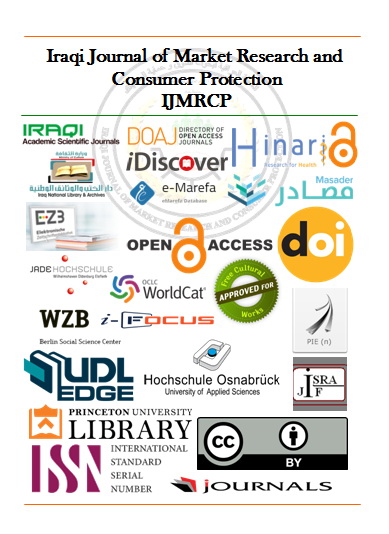TESTING THE INHIBITORY EFFECT OF TRICIN AGAINST SOME FOODBORNE BACTERIA AND ESTIMATE ITS PHENOL COEFFICIENT
TESTING THE INHIBITORY EFFECT OF TRICIN AGAINST SOME FOODBORNE BACTERIA AND ESTIMATE ITS PHENOL COEFFICIENT
DOI:
https://doi.org/10.28936/10.28936/(1)jmracpc11.2.2019Keywords:
Antimicrobial activity, Phenol, Rice bran, TricinAbstract
The inhibitory effect of the hot aqueous extract of commercial jasmine rice bran (HAE) and the purified tricin compound on the growth of some food-borne pathogenic bacteria (Escherichia coli, E. coli O157:H7, Salmonella typhimurium, Salmonella typhi, Pseudomonas aeruginosa, Klebsiella pneumoniae, Shigella spp, Staphylococcus aureus, Bacillus cereus and Bacillus subtilis) and compared with phenol coefficient using several dilutions of water: purified tricin (70:1, 90:1, 1:100, 1:120 and 1:150). and water: purified tricin (70:1, 90:1 and 1:100),at the same concentration, sterilized with microbial filters .Tricin purified showed higher efficiency then the aqueous extract HAE against growth of gram-positive and negative bacteria. The highest significant inhibition activity of purified Tricin compound was at P≤0.05 effect against B. subtilis , B. cereus and S. aureus with inhibitory diameter of 29, 27.5 and 27.5 mm respectively. White the aqueous extract HAE had loupe effectiveness than it against the same bacteria with a diameter of inhibition7,8.5 and 10.5 mm respectively After incubation at 37°C for 24 h, the last reading was the highest inhibition activity of the extract HAE. As for the results of the susceptibility of tricin as an antiseptic towards Gram-negative bacteria S. typhi and Gram-positive S. aureus compared to phenol using several dilutions of each, high dilutions had a clear inhibition in the growth of S. aureus and S. typhi bacterial isolates, especially when compared with phenol when The higher dilution (1:100) showed bacterial growth, while we did not find growth for these isolates at the same dilution coefficient of tricin for periods (5, 10, and 15) min After incubation at 37°C for 48 h. S. typhi was less sensitive than S. aureus towards phenol and tricin.
Published
Issue
Section
License
Copyright (c) 2024 Iraqi Journal of Market Research and Consumer Protection

This work is licensed under a Creative Commons Attribution 4.0 International License.





